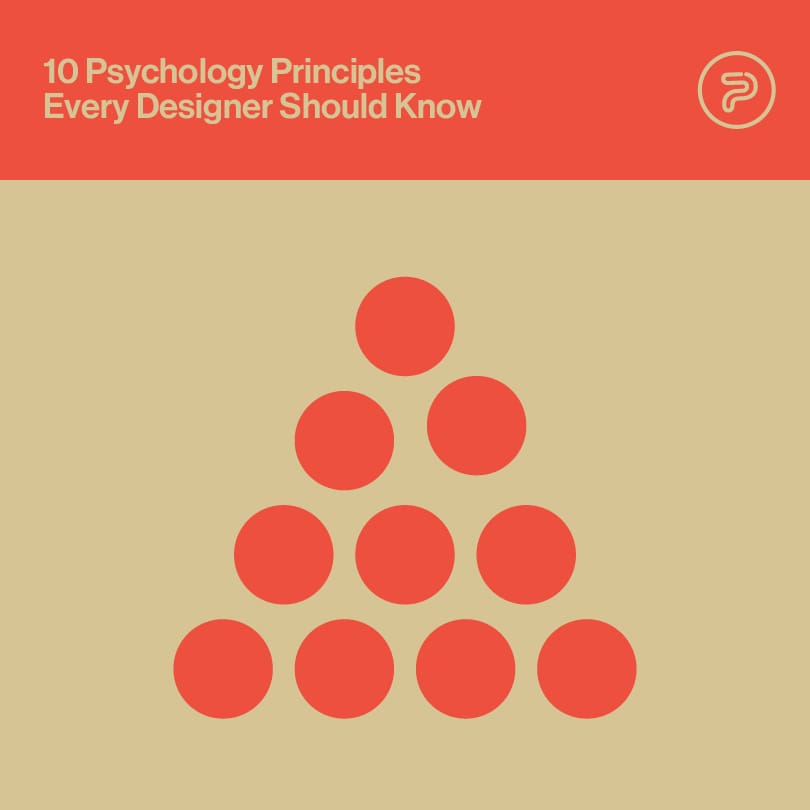Like all crafts are, design is an intersection of science and aesthetics. We need beauty and appeal, but we want to balance those with the object’s function and performance. A masterpiece of design needs our talent as much as our knowledge.
Since it is concerned with human cognition, perception, and the mind, psychology is probably one of the most relevant scientific disciplines for the design of any kind. This goes for web designers, UI/UX designers, graphic designers, etc.
In this post, we are exploring Freud’s science and learning about human perception. We will explain some of the principles you can use to maximize the effectiveness of aesthetics.
Aesthetics/Usability Association: The Connection of the Looks and Functionality
This principle is about the interconnectedness of the two most important aspects of user experience: aesthetics and functionality. People tend to perceive more beautiful layouts as more functional.
What is especially important about this principle is that it is culturally sensitive. That means that people from diverse cultural backgrounds tend to perceive aesthetics (and therefore usability) differently. It is therefore important for a designer to know the cultural preferences of the target audience.
Doherty’s Threshold: The Importance of Speed
Doherty’s threshold explains how the quality of the user experience depends on a machine’s response time. If a system (a software, landing page, or an ATM, for example) responds in more than 400 milliseconds, the user experience is less engaging.
In other words, the more loading time an app needs, the more nervous and absent the user is.
It is interesting to think that before 1982, it was common to think that the threshold was 2 entire seconds. Considering the proficiency of contemporary technology, a response this long is unimaginable today.
Fitt’s Law: The Importance of Distance
Although all this talk of time, speed, and distance resembles physics, we’re still in the domain of psychology and design! Fitt’s law is there to remind designers that larger elements standing closer to our reach tend to attract more attention. In turn, they are the ones that will more probably be selected by the user.
This principle is mostly relevant for positioning buttons and typing boxes on the screen or page.
Hick’s Law: the Number of Choices Slows Down the User
It is scientifically proven that the more choices a user has, the greater the risk they might overwhelm the user and ruin the user experience. Scientists named William Hick and Ray Haimon figured this out almost seventy years ago.
The basic recommendation here is the following: if an action requires a lot of choices from the user, then the necessary steps should be grouped into sequences. In such a way, the user’s attention has lower chances of dropping.
Colors and Perception: The Deeper Meaning of Pigments
Human feelings are deeply connected with various colors. Brands choose colors to align with their products, values, and mission.
Be mindful of the fact that there are cool (blue, green, and purple) and warm (red, yellow, orange) colors. Then, there are primary, secondary, and tertiary colors.

Finally, there are their meanings. Usually, each color can stand for something “positive”, “neutral”, and “negative”. For example, black stands for elegance, mystery, and death, while blue is a symbol of loyalty, calmness, and sadness, etc.
Colors’ values, intensity, tint, and mutual combinations can further stipulate the message.
Mental Models: Aligning With the Users’ Preconceptions
Before designing an interface or an app, it is necessary to understand the future users’ mental models. These models refer to people’s deeply rooted unconscious convictions and ideas. Although not necessarily objectively true, these ideas affect people’s interaction and expectations, so designers have to be able to understand them and design accordingly.
The famous “man with a hammer” analogy is a good illustration of this principle. The analogy is saying that everything is a nail for a man equipped with a hammer.
The Von Restorff Effect: Differentiate to Make Them Remember
According to this principle, if they see a group of similar elements, people are likely to remember the one standing out.
For designers, this comes in handy when they have many elements to display, but they want to make people remember only the relevant ones. To do that, they will make the relevant element stand out for something: size, color, contours, motion, etc. Examples of the so-called “isolation principle” are everywhere. Reading a website, we will notice the words in bold before reading the whole text.
Peak-End Rule: Understanding the Amplitude of User Experience
People remember experiences through the maximum and minimum levels of satisfaction. In other words, we will remember the best and worst. Later, we will evaluate the experience according to their proportions. If the action provided us with a larger number of pleasant experiences, we will probably evaluate it as positive. Otherwise, if the unpleasant experiences outweigh, we will think about the entire experience as negative.
This principle tells a designer that in order to have a happy user, the user needs to be pleased with most elements and steps of the way.
Gestalt Principles: The Organizing Criteria
Even if you are not familiar with Gestalt psychology, you probably know about it from the movies. Everyone has seen a psychologist showing a colored stain on the paper and asking the patient to say what they see in it. The secret lies in the fact that everyone sees different things in the same shape.
What the Gestalt therapist does here? They are trying to figure out how a person organizes random shapes to find meaning in them. Although we all see different things in these shapes, there is a limited number of organizing principles we apply to extract meaning. These are similarity, continuation, closure, proximity, figure, and symmetry.
A designer should know about these principles, to streamline the processes and make them feel natural and meaningful for the users.

Miller’s Law: The Capacity of Human Memory
George A. Miller was a professor of psychology at Princeton University. He was researching the maximum number of elements we can keep in our working memory. According to his conclusion, this number is 7 (+/- 2, depending on a person).
Miller’s law is also known as Cognitive Load Theory, and it is helping designers understand how many elements an average person can handle at the same time.
Final Thoughts
The principles you read about here are only the top 10 relevant psychological principles. There are many more, so a designer can never stop learning. In order to provide a seamless and enjoyable user experience, it is essential to understand the human mind. Otherwise, we are going against the basic principles of human perception and risk to waste time and money to no avail.





